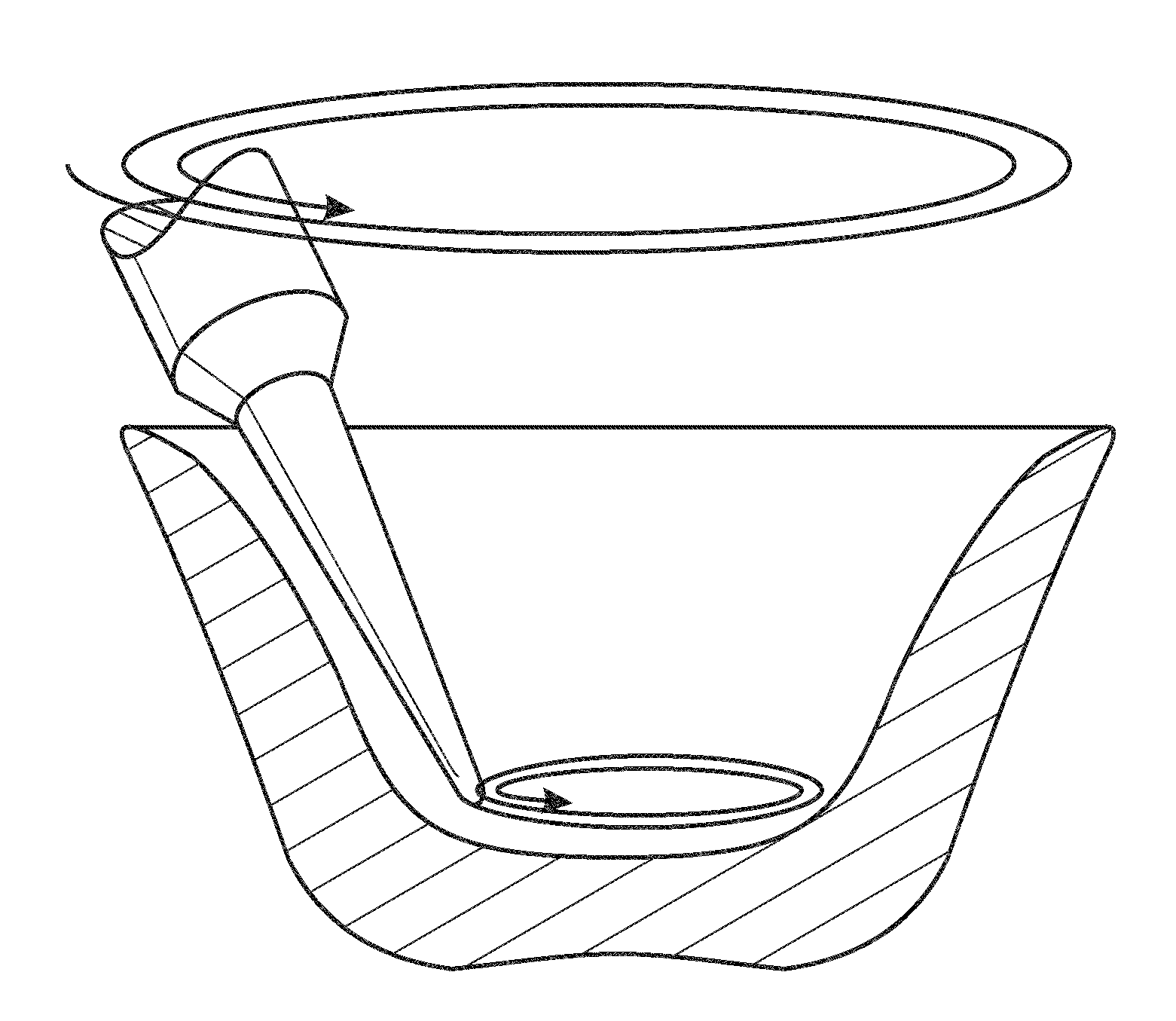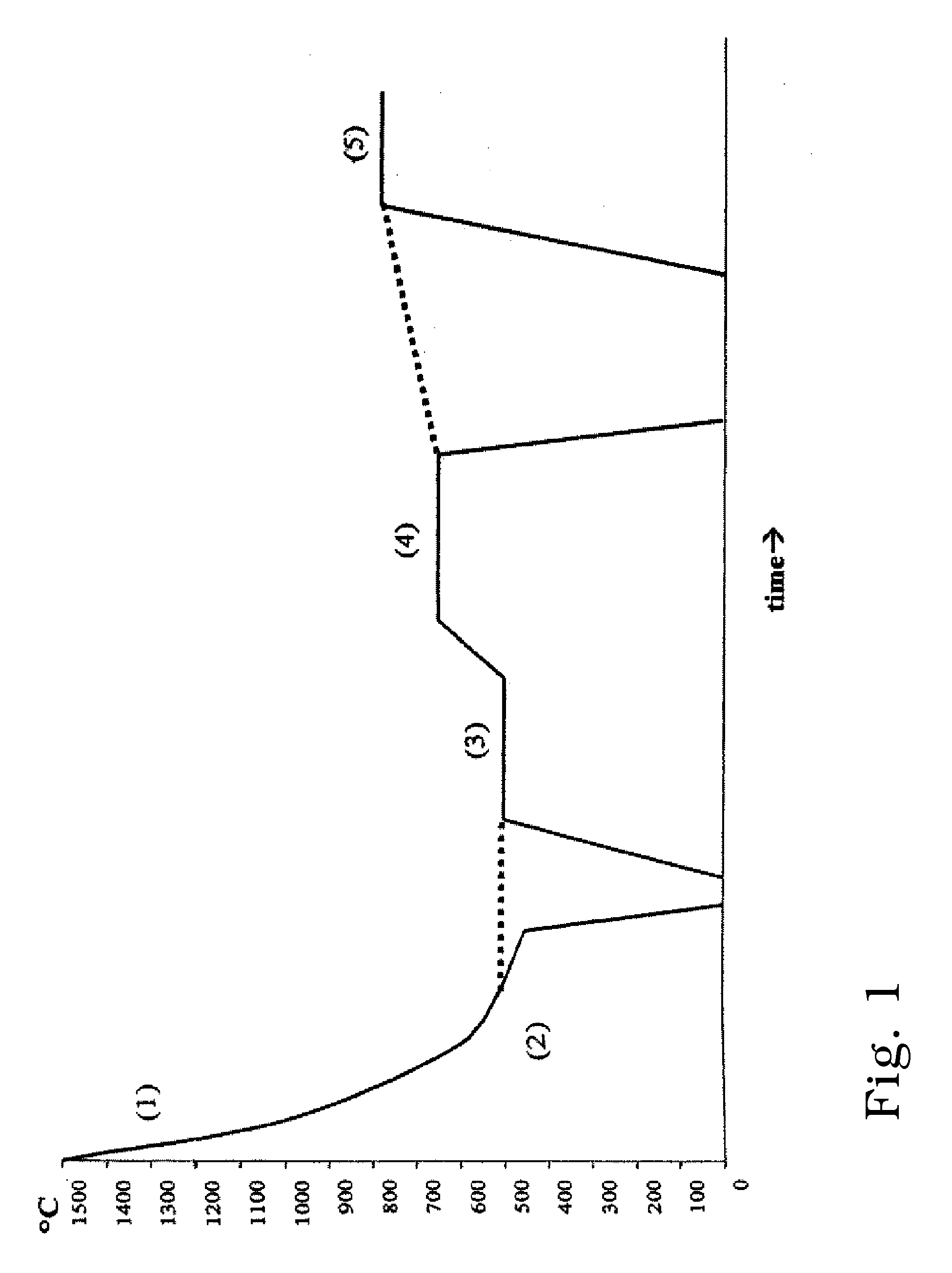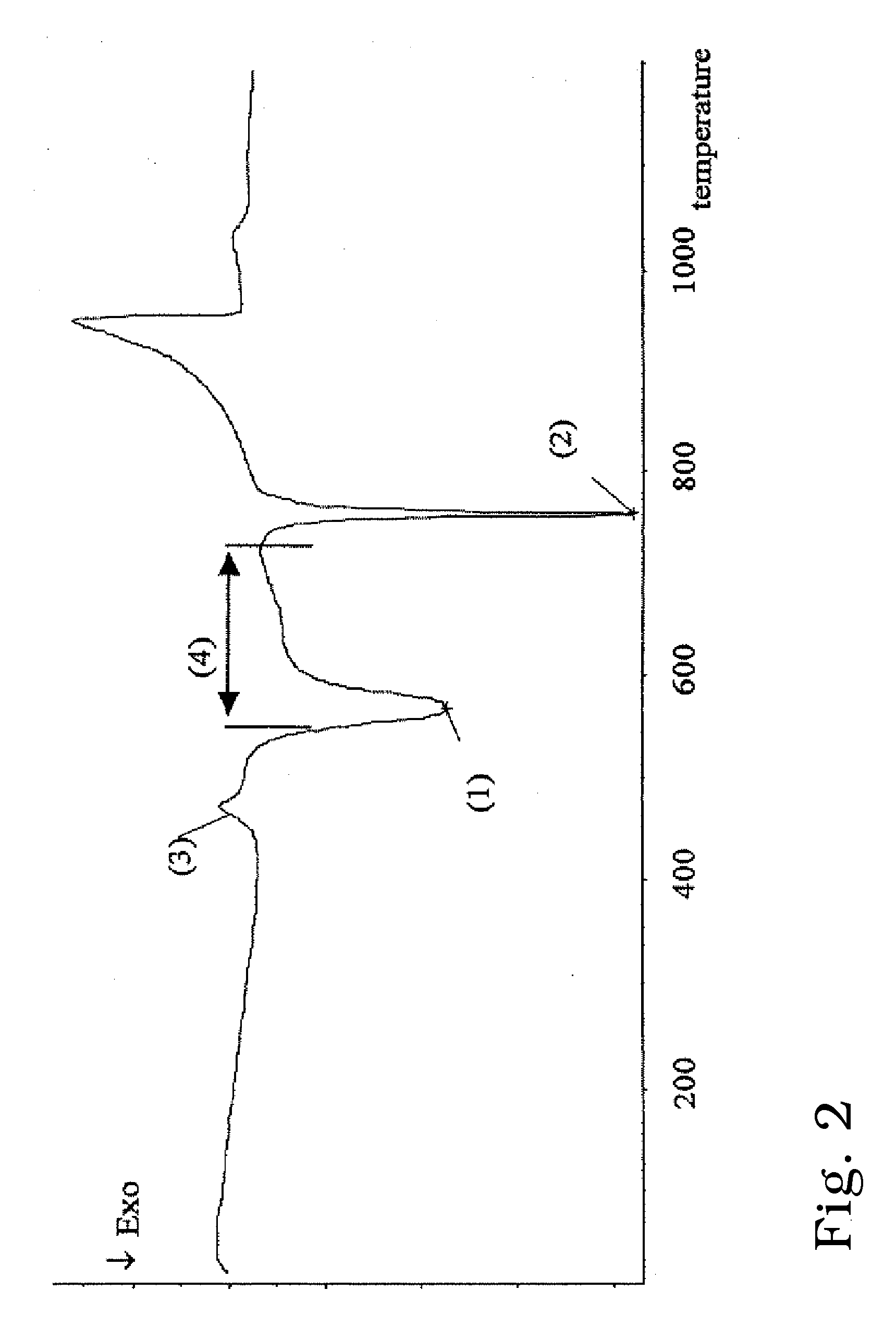Machining of Ceramic Materials
a technology of ceramic materials and machining, which is applied in the field of lithium silicate materials, can solve the problems of difficult to combine the properties of low strength in the material stage, difficult to achieve the effect of reducing machining time, reducing machining time, and maintaining strength
- Summary
- Abstract
- Description
- Claims
- Application Information
AI Technical Summary
Benefits of technology
Problems solved by technology
Method used
Image
Examples
example 1
[0172]The glass was molten at a temperature of 1500° C. for 3 hours and was then poured into steel moulds which were preheated to 300° C. After one minute the glass bars were transferred into a cooling furnace and were tempered at 500° C. for 10 minutes and then cooled to room temperature.
[0173]The glass was homogeneous and transparent.
[0174]Following the glass bar was subjected to a first crystallization at 650° C. for a period of 20 minutes.
[0175]From the such ceramized bar, discs were sawn out of a round bar, and biaxial strength was measured. The phase content was analyzed via XRD (X-ray diffraction). Lithium metasilicate was the only phase that was detected. Biaxial strength was 119+ / −25 MPa.
[0176]Also the milling time of test bodys was measured. The milling time of the test body was one minute below that of ProCAD®, which was used as reference.
[0177]The edge strength was good.
[0178]Additional 10 discs were subjected to a second crystallization at 850° C. for a period of 10 min...
example 6
[0183]Glass bars were produced according to example 1. The glass again was homogeneous and transparent.
[0184]The first crystallization was performed at 650° C. for a period of 20 minutes.
[0185]Lithium metasilicate was determined to be the main phase with traces of lithium disilicate also being present. Biaxial strength was 135+ / −24 MPa.
[0186]Again the milling time of a test body was measured. The milling time of the test body was one minute below that of ProCAD®, which again was used as reference.
[0187]The edge strength was very good.
[0188]After a second crystallization which was performed according to example 1 the biaxial strength was 472+ / −85 MPa which correlates to a Strength Increase Factor of 3.5.
[0189]Fracture toughness (IF) was 2.3 MPam0.5.
[0190]Translucence was extraordinary.
example 9
[0191]Glass bars were produced according to example 1. The glass again was homogeneous and transparent.
[0192]The first crystallization was performed at 650° C. for a period of 20 minutes.
[0193]Lithium metasilicate was determined to be the only phase. Biaxial strength was 112+ / −13 MPa.
[0194]Again the milling time of a test body was measured. The milling time of the test body was one minute below that of ProCAD®, which again was used as reference.
[0195]The edge strength was good.
[0196]After a second crystallization which was performed according to example 1 the biaxial strength was 356+ / −96 MPa which correlates to a Strength Increase Factor of 3.16.
[0197]Fracture toughness (I F) was 1.9 MPam0.5.
[0198]Translucence was acceptable.
PUM
| Property | Measurement | Unit |
|---|---|---|
| fracture toughness | aaaaa | aaaaa |
| grain size | aaaaa | aaaaa |
| grain size | aaaaa | aaaaa |
Abstract
Description
Claims
Application Information
 Login to View More
Login to View More - R&D
- Intellectual Property
- Life Sciences
- Materials
- Tech Scout
- Unparalleled Data Quality
- Higher Quality Content
- 60% Fewer Hallucinations
Browse by: Latest US Patents, China's latest patents, Technical Efficacy Thesaurus, Application Domain, Technology Topic, Popular Technical Reports.
© 2025 PatSnap. All rights reserved.Legal|Privacy policy|Modern Slavery Act Transparency Statement|Sitemap|About US| Contact US: help@patsnap.com



